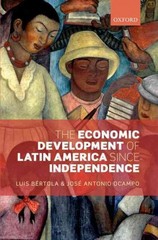Question
The U.S. economy rebounded quickly in 2021, as Goldman Sachs Research predicted, but what will 2022 bring? David Mericle , chief U.S. economist, and Alec
The U.S. economy rebounded quickly in 2021, as Goldman Sachs Research predicted, but what will 2022 bring? David Mericle, chief U.S. economist, and Alec Phillips, chief U.S. political economist, highlight some of the key questions for 2022.
Fiscal spending was a key source of support for economic growth in 2021. How will spending change in 2022?
Alec Phillips: In short, it's going to become a headwind relative to the tailwind it was last year. We expect Congress to raise spending in 2022 but the impact is likely to be modest. We recently downgraded our economic forecast for the first three quarters of 2022 due to the lack of support in the Senate for the House-passed Build Back Better bill and the near-term spending it includes. It also now looks like Congress will allow the expanded child tax credit to lapse. That said, Congress is likely to approve some new spending, though most of it would occur over the next several years. So under our revised fiscal forecast, the decline in fiscal support in 2022 is now even larger. We estimate that the boost to the level of GDP from the various pandemic fiscal packages peaked at just under 8pp in the second quarter of last year and has now fallen to around 5pp. We estimate it will decline further to 1.5-2% by the fourth quarter of this year.
So what will happen to U.S. GDP this year as a result?
David Mericle: While consensus expects GDP growth of 3.4% in 2022 on a Q4/Q4 basisand the median FOMC participant expects 4%we don't believe that GDP growth will meet consensus expectations. Our forecast is lower at 2.4% on a Q4/Q4 basis or 3.5% on a full-year basis. The deceleration is likely to be sharpest in Q1, when the omicron variant will likely weigh on service sector spending and labor supply, and it may also worsen global supply chain disruptions. For 2022 as a whole, the main headwind is the large fiscal pullback that we have anticipated since the start of 2021. As we have noted in our 2022 outlook, we expect three positive growth impulsesfurther reopening of the service sector as health risks decline, a boost to consumer spending from pent-up savings and wealth effects, and inventory restockingto offset the fiscal drag by enough to keep growth above trend this year but not by enough to meet consensus expectations.
You mentioned labor supply. With labor demand still strong, where do you see unemployment heading in 2022?
David Mericle: The unemployment rate fell quickly last year and our expectation is that it should continue to fall in 2022. In early 2021, we took our unemployment rate forecast far below consensus after the Democrats' win in the Georgia Senate elections made a large fiscal package likely. We stuck with that forecast when the initial post-vaccination pace of labor market recovery proved disappointing, because we thought that strong labor demand would eventually produce large job gains and suspected that enhanced unemployment benefits were temporarily delaying the return to work. We later confirmed that this indeed was the case by comparing states that ended these benefits early with those that didn't. With labor demand still red hot and enhanced unemployment benefits now expired, we expect the unemployment rate to fall to a 50-year low of 3.4% by the end of 2022. Labor force participation is likely to remain below the pre-pandemic trend, though this looks largely voluntary or structural.
And what about inflation? Will the current surge continue?
David Mericle: The current inflation surge is likely to get worse before it gets better, but by the end of the year we expect core PCE inflation to fall below 3%, though CPI is likely to remain quite a bit higher. Admittedly, the key driver of our forecastthe partial resolution of supply-demand imbalances in the durable goods sectoris hard to time, and omicron is likely to make things worse in the near term. Surveys of businesses and workers suggest that most expect wage growth to run at around 4% this year, which would be consistent with inflation coming down toward the Fed's 2% goal, though the latest wage numbers look much stronger than that.
key points of the article using macroeconomic terminology
Step by Step Solution
There are 3 Steps involved in it
Step: 1

Get Instant Access to Expert-Tailored Solutions
See step-by-step solutions with expert insights and AI powered tools for academic success
Step: 2

Step: 3

Ace Your Homework with AI
Get the answers you need in no time with our AI-driven, step-by-step assistance
Get Started


